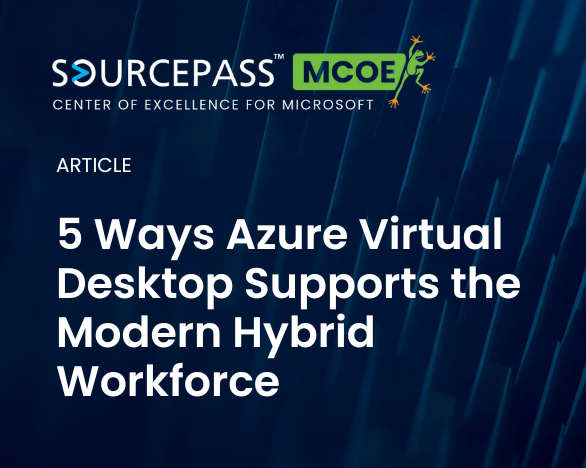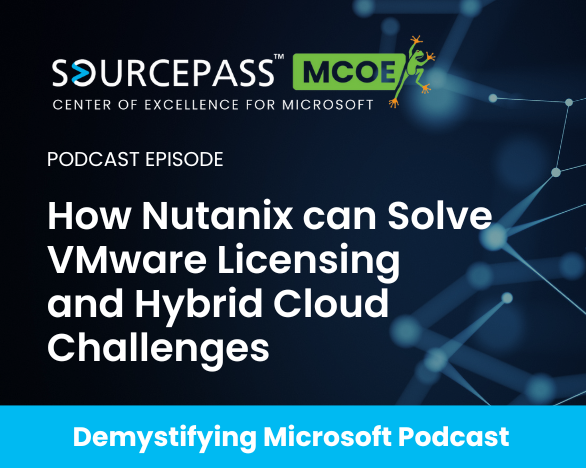6 min read
Microsoft Licensing Update: Windows 365 Cloud Apps Now in Preview
Microsoft’s Windows 365 Cloud Apps, now available in public preview, introduces a new way for organizations to deliver only the applications users...
2 min read
Nicole Walker
:
Jul 9, 2025 3:39:54 PM

Hybrid IT has evolved from a transitional model into a long-term strategy. What began as a way to bridge on-premises infrastructure with emerging cloud services has matured into a flexible, scalable, and resilient approach to enterprise architecture.
For IT leaders, the question is no longer whether hybrid is viable—it’s how to implement it in a way that aligns with business goals, security requirements, and operational realities.
In its early stages, hybrid IT was often limited by rigid hardware requirements, high costs, and fragmented management tools. These constraints made it difficult for many organizations to adopt hybrid models at scale.
Today, the landscape looks very different. A growing ecosystem of platforms and tools now support hybrid architectures that are more adaptable and cost-effective. Whether through solutions like Azure Local, virtualization platforms with cloud integration, or vendor-agnostic management layers, hybrid infrastructure has become a practical and sustainable option for a wide range of business needs.
Modern hybrid environments are no longer defined solely by where workloads reside, but by how easily they can move, scale, and integrate across platforms. The emphasis is on flexibility—placing resources where they deliver the most value, without being locked into a single environment.
Technologies like Azure Virtual Desktop allow organizations to deploy virtual desktops both in the cloud and on-premises, optimizing performance, cost, and user experience. Unified management tools such as Azure Arc and Microsoft Defender for Endpoint extend visibility and control across environments, enabling consistent policy enforcement and security posture regardless of location.
Capabilities like seamless VM migration and cloud bursting further enhance agility, allowing IT teams to scale dynamically without overprovisioning or rearchitecting their infrastructure.
As hybrid environments grow more complex, maintaining a consistent security posture becomes critical. Tools like Azure Arc and Microsoft Defender help unify security operations across cloud and on-prem resources, reducing the risk of gaps or inconsistencies.
This centralized approach also simplifies compliance. Whether you're addressing industry regulations or internal governance standards, having a single view of your environment makes it easier to demonstrate control, enforce policies, and respond to audits.
Across industries, organizations are using hybrid models to solve real-world challenges. One company with occasional high-performance GPU needs avoids investing in expensive hardware by spinning up Azure VMs on demand—paying only for what they use.
Others running Citrix or Azure Virtual Desktop environments use hybrid deployments to balance performance and cost. Local users connect to on-prem resources for speed, while remote users are served from the cloud, with the ability to scale automatically during peak demand.
For disaster recovery, many organizations now rely on Azure’s archive storage and hybrid licensing to maintain a ready-to-activate DR environment—without the cost of a second physical site.
Hybrid environments are entering a new phase, shaped by platforms designed to operate seamlessly across on-premises and cloud infrastructure. These systems support consistent licensing, management, and performance regardless of where workloads reside.
Applications are also becoming more portable. Workloads can now move between environments without reconfiguration or downtime, offering greater flexibility, scalability, and resilience.
This evolution is also making infrastructure planning more vendor-agnostic. Organizations are focusing less on platform loyalty and more on selecting tools that align with performance needs, cost efficiency, and long-term goals.
At the Sourcepass Center of Excellence for Microsoft, we work with IT leaders to explore how hybrid technologies like Azure Local, Azure Virtual Desktop, Nutanix, HPE Morpheus, and other unified management tools can support real-world business needs. Whether you’re refining your current environment or planning your next move, understanding your options is the first step.
We support both the hardware and software aspects of your strategy. From recommending the right devices to identifying the best-fitting tools and platforms, our team is here to help you build a solution tailored to your business goals.
Schedule a call with one of our experts today to start shaping what’s next for your organization.

6 min read
Microsoft’s Windows 365 Cloud Apps, now available in public preview, introduces a new way for organizations to deliver only the applications users...

5 min read
Microsoft has introduced a combined security and compliance add-on for Business Premium subscribers, delivering enterprise-grade protection and...

6 min read
Microsoft Purview Suite for Business Premium is a compliance add-on for Microsoft 365 Business Premium that delivers enterprise-grade data...

Azure Virtual Desktop (AVD) offers transformative benefits for organizations navigating modern IT challenges. Here’s how AVD empowers enterprises to...

Cloud cost optimization in Azure isn’t just about visibility. It’s about precision. As environments scale and workloads evolve, the real challenge...

The virtualization landscape is shifting fast, and IT leaders are under pressure to make critical decisions about data center hardware, licensing,...